Mulga, Yarran
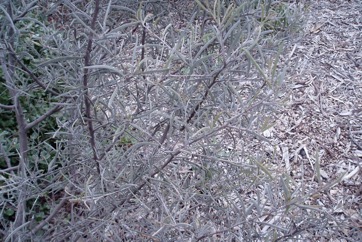
It is a subtropical plant. It occurs throughout most of Australia in the drier central areas. It grows in areas with a rainfall below 400 mm per year. It prefers a light well drained soil. It can grow in alkaline soils. t is suited to dry open sunny positions. It mostly occurs on flat red earth plains. Often it grows in pure stands. It is drought and frost resistant. In Africa it grows up to 2,000 m altitude. It can grow in arid places. Mulga is killed by fire. It suits hardiness zones 9-10.
Also known as:
Artety, Artitja, Irtetye, Ititja, Kurku, Manytja, Wanari
Synonyms
- Acacia brachystachya
- Racosperma aneurum (Benth.) Pedley
Edible Portion
- Seeds, Flowers, Gum, Manna, Gall, Lerp
Where does Mulga grow?
Found in: Africa, Asia, Australia, East Africa, Hawaii, Israel, Kenya, Pacific, Pakistan
Notes: There are about 1,350 Acacia species. Over 1,000 occur in Australia. Also as Mimosaceae.
Status: One of the most important edible acacia seed species in the desert areas of Australia.
Growing Mulga, Yarran
Cultivation: It is grown from seed. Seed needs to be treated before it will grow. Normally this is by putting the seeds in very hot water and letting the water cool down overnight then planting the seeds immediately. Seed can be harvested by shaking from the tree or by raking it up off the ground.
Edible Uses: The seeds are ground into flour. The seed tastes like peanut butter and is nutritious. Galls on the tree are used to quench thirst. The bark exudes a gum that is edible. Water can sometimes be found in the roots. A sweet, red lerp that forms on the leaves and branches is eaten.
Production: Flowering is mainly April to July or following rain. If good following rains do not occur many flowers simply fall without forming pods and seeds. Following good rains, insect attack produces galls 1 cm across with a juicy yellow flesh. These are edible. The galls with small protuberances are the ones which are edible. The honey dew from the lerp insect (Austrotachardia acaciae) is also edible. It is soaked in water to produce drinks. Yields of seed from wild stands of mulga can be 100 kg per hectare.
Nutrition Info
per 100g edible portion| Edible Part | Energy (kcal) | Protein (g) | Iron (mg) | Vitamin A (ug) | Vitamin c (mg) | Zinc (mg) | % Water |
|---|---|---|---|---|---|---|---|
| Seed | 381 | 25.4 | 14.1 | - | - | 2.9 | 5.2 |
| Flowers | - | - | - | - | - | - | |
| Gum | - | - | - | - | - | - |
Mulga, Yarran Photos

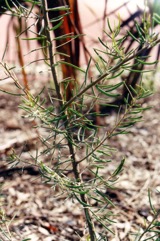
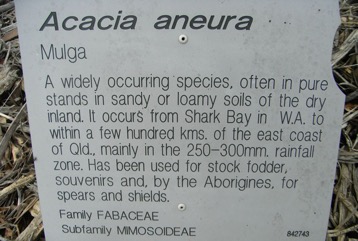
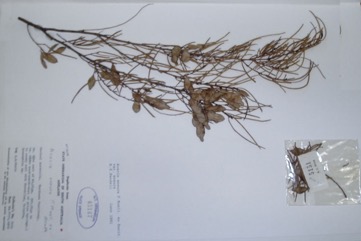
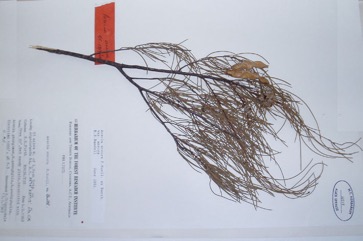
References
Bodkin, F., 1991, Encyclopedia Botanica. Cornstalk publishing, p 8
Bindon, P., 1996, Useful Bush Plants. Western Australian Museum. p 7
Bircher, A. G. & Bircher, W. H., 2000, Encyclopedia of Fruit Trees and Edible Flowering Plants in Egypt and the Subtropics. AUC Press. p 4
Boomsma, C.D., 1972, Native Tree of South Australia. Woods & Forests Department South Australia, Bulletin No.19. p 32
Cancilla, D., 2018, Ethnobotanical and Ethnozoological Values Desktop Assessment - Eliwana Project. p 9
Cherikoff V. & Isaacs, J., The Bush Food Handbook. How to gather, grow, process and cook Australian Wild Foods. Ti Tree Press, Australia p 45, 188
Cribb, A.B. & J.W., 1976, Wild Food in Australia, Fontana. p 77
Cundall, P., (ed.), 2004, Gardening Australia: flora: the gardener's bible. ABC Books. p 73
Doran, J.C., & Turnbull, J.W. (Eds), 1997, Australian Trees and Shrubs: species for land rehabilitation and farm plantings in the tropics. ACIAR Monograph No 24. p 108
Eddie, C., 2007, Field Guide to Trees and Shrubs of Eastern Queensland Oil and Gas Fields. Santos p 44
Elliot, W.R., & Jones, D.L., 1982, Encyclopedia of Australian Plants suitable for cultivation. Vol 2. Lothian. p 16
Etherington, K., & Imwold, D., (Eds), 2001, Botanica's Trees & Shrubs. The illustrated A-Z of over 8500 trees and shrubs. Random House, Australia. p 49
Facciola, S., 1998, Cornucopia 2: a Source Book of Edible Plants. Kampong Publications, p 150
Flora of Pakistan. www.eFloras.org
Goddard, C. & Kalotas A. (Eds.), Punu, 2002, Yankunytjatjara plant use. Jukurrpa books. p 33
Greig, D., 1996, Flowering Natives for Home Gardens. Angus & Robertson. p 27
Hall, N. et al, 1972, The Use of Trees and Shrubs in the Dry Country of Australia, AGPS, Canberra. p 343
Hemphill, I, 2002, Spice Notes. Macmillan. p 413
Holliday, I., 1989, A Field Guide to Australian Trees. Hamlyn. p 10
Hunter, J. T. et al, Budjiti traditional use of plants on Naree Station. p 12
Hunter, J.T., 2017, Is there a relationship between contemporary high Aboriginal plant resource locations and mapped vegetation communities? Cunninghamia 17:27-34. The Royal Botanic Garden Sydney. ISSN 2200 - 405X
Isaacs, J., 1987, Bush Food, Aboriginal Food and Herbal Medicine. Weldons. p 107, 110
Lang, P. J., et al, 1986, Anangu Pitjantjatjara Lands Biological Survey. p 43
Latz, P., 1996, Bushfires and Bushtucker. IAD. p 88
Latz, P & Wightman, G., 1995, Desert Bush Tucker Identikit. Common Native Food Plants of Central Australia. Parks & Wild Commission Northern territory. p 6
Lazarides, M. & Hince, B., 1993, Handbook of Economic Plants of Australia, CSIRO. p 1
Linnaea 26:627. 1855
Lord, E.E., & Willis, J.H., 1999, Shrubs and Trees for Australian gardens. Lothian. p 36
Low, T., 1991, Wild Food Plants of Australia. Australian Nature FieldGuide, Angus & Robertson. p 152, 180
Low, T., 1992, Bush Tucker. Australia’s Wild Food Harvest. Angus & Robertson. p 12, 86
McKerney, M. & White, H., 2011, Bush Tucker, Boomerangs & Bandages. Border River-Gwyder Catchment Management Authority p 45
Milson. J., 2000, Trees and Shrubs of north-west Queensland. DPI p 112
Molyneux, B. and Forrester, S., 1997, The Austraflora A-Z of Australian Plants. Reed. p 31
Morley, B.D., & Toelken, H.R., (Eds), 1983, Flowering Plants in Australia. Rigby. p 147
Paczkowska, G . & Chapman, A.R., 2000, The Western Australian Flora. A Descriptive Catalogue. Western Australian Herbarium. p 298
Plants for a Future database, The Field, Penpol, Lostwithiel, Cornwall, PL22 0NG, UK. http://www.scs.leeds.ac.uk/pfaf/
Recher, P, 2001, Fruit Spirit Botanical Gardens Plant Index. www.nrg.com.au/~recher/ seedlist.html p 4
Robins, J., 1996, Wild Lime. Cooking from the Bush food garden. Allen & Unwin p 165
Royal Botanic Gardens, Kew (1999). Survey of Economic Plants for Arid and Semi-Arid Lands (SEPASAL) database. Published on the Internet; http://www.rbgkew.org.uk/ceb/sepasal/internet [Accessed 26th April 2011]
Self, M., 199, Phoenix Seeds catalogue. p 16
Smith, K & I., 1999, Grow your own bushfoods. New Holland. Australia. p 99
Smith, N. M., 1991, Ethnobotanical Field Notes from the Northern Territory, Australia, J. Adelaide Bot. Gard. 14(1): 1-65
Townsend, K., 1994, Across the Top. Gardening with Australian Plants in the tropics. Society for Growing Australian Plants, Townsville Branch Inc. p 47
Urban, A., 1990, Wildflowers of Inland Australia. Portside editions. p 82
Usher, G., 1974, A Dictionary of Plants Used by Man. Constable. p 11